The end of historical diving, as we already reported in this website corresponds to the beginning of the 80s in the 20th century; this period of time represents the borderline between artisan and spontaneous diving and industrial-made diving, above all between self-made and organized diving in the new born diving centers, between the old style teaching schools and the American ones.
What marks the beginning of the decade is the law which prohibits, in all Italy, spear fishing diving with the breathing apparatus, already banned since years in the rest of Europe. This announcement arises a big concern among the manufacturers, afraid of a sale drop of regulators and spear guns. Consequently, new products in these first two years are almost null for spear guns, and few for regulators. To keep the interest high we find the Tekna T-2100 regulator coming from the United States, with its upstream second stage with sealed cartridge of unusual shape; then, the GSD S300 regulator, also of unusual look, unique for its upwards “moustaches”. Scubapro launches the Air 1 regulator, like the Pilot second stage: Mares answers with the Voit AMF MR12-III. Cressi produces the Galaxi, a classis double-stage regulator enriched of external regulation of its intermediate pressure. Buoyancy compensator devices are several; the one that is not unobserved because of its manufacturing characteristics and advantageous price is Technisub TS-80 of a bright yellow and black colors. It is interesting to see that European BCDs were equipped with a bottle of approx. 1/3 of liter as an accessory, to be filled by pouring air of the group, while those produced in the USA (Dacor, Tabata, etc.) always foresaw a small CO2 bottle.
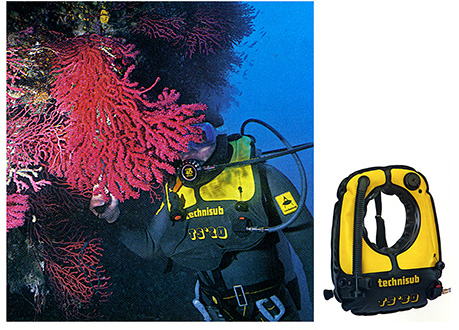 |
Electronics become to be the protagonist with Nikonos IV plus Yellow Sub 35 and 150 flashes, the Ikelite Substrobe 75 and 150, the Nikon SB-101, the Cycnus produced by Cfs-Centro Fotoottico Subacqueo of Genoa. Dacor diving Minicomputer is also electronic, based on the U.S. Navy tables, but destined not to go behind advertising. The Sos decompression gauge remains an analogic mechanical instrument, with the last model of this series, the Dcr, to be calibrated based on the type of dive to make. In the sector of traditional instruments, we must highlight Decocontrol of Mega Sport, abbreviated in Decontrol, an aggregated composed of three components, to be carried in the wrist for the total dive control.
The summer of 1981 will remain in the Garda lake divers’ memory for the long presence of Jacques Piccard, who comes to explore the lake with his Forel mesoscafo – submarine for medium depths.
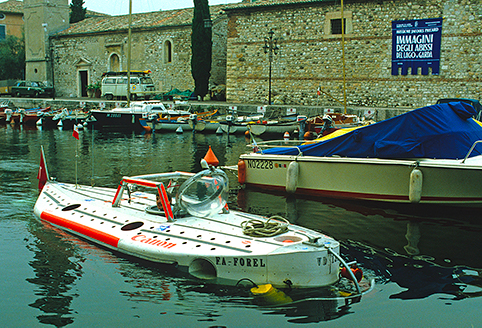 |
One day, they meet and take pictures in front of a platform at 40 meters; then, he goes to look for the bottom and, at -343 meters he takes a picture of the only thing present there, an oak leaf laying in the sad muddy bottom. During these months, video diving operators discover the powerful lights of Fulgormare of Turin and, for photo diving operators, the optical viewfinders of the enthusiastic Cfs. Looking at the new watch catalogues, we can admire the Paul Picots’ and the Manta of Breil; then, we get lost among the several quadrants of all prices, some genuinely nice and some only of impact. For the wetsuits, colors explode; pictures and advertising in these first years of the 80s are all oriented towards feminine beauty and colors.
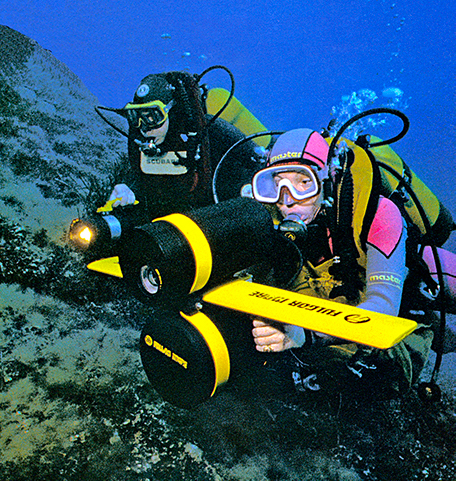 |
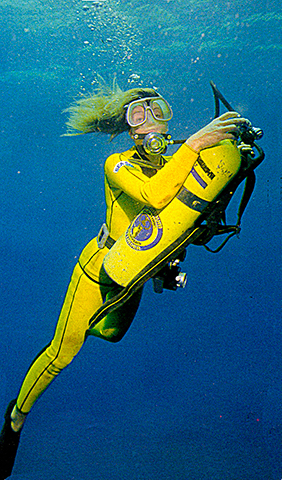 |
Injection regulators are now a solid concept, and Technisub, in 1982 completely renew its range, by presenting the Spiro family, composed of five modes within La Spirotechnique brand: Spiro Club, 25/10, 40/10, 50/10, Spiro Pro, with the Spiro Pro R anti-freeze version. Afterwards, Spiro Explorer will be added.
|
INJECTION REGULATORS With the Inject series of regulators of the Technisub-La Spirotechnique group we passed from "on-demand" breathing to “on-offer” breathing meaning that, after the first short moment of inhaling (first break), air flows by itself, without the need to continue the effort to get it. The successive series of Spiro regulators maintain these identical concepts, by further reducing the initial breathing effort, making an immediate regulation of the air injection. The choice is among five models. The Spiro Club is the simplest one, followed by Spiro 25/10, 40/10, 50/10, direct heir of Inject 40 L. Spiro Pro is equipped with a membrane first stage, same as Aquilon, and it is proposed also in the Spiro Pro R anti-freeze version. |
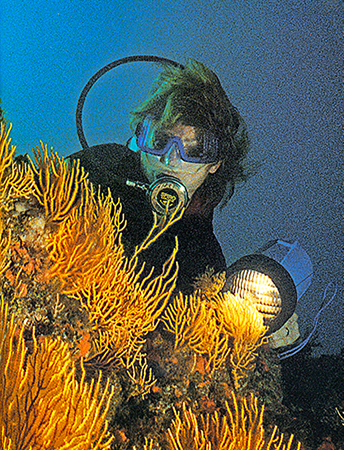 |
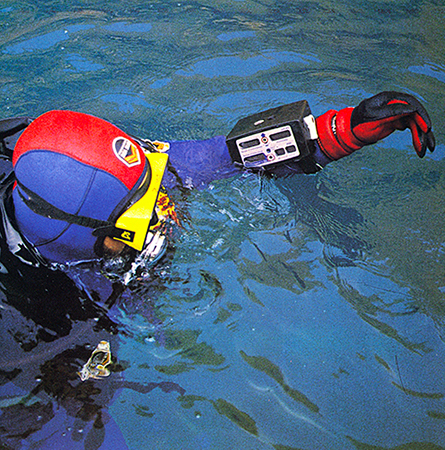 |
In this period, it is easy to see as regulators, instruments and gear in general keep on improving, slowly, without the big forward steps of the past, which affected diving progress. You should think what the Mistral regulator introduction brought, then the Pinocchio and Rondine masks, the single-hose double stage regulator, the BCD. From this moment of lethargy, electronic wakes-up the market, expanding from the photographic sector, where it began its diving path to lights, where Technisub excels with the new electronic Vega light, to enter into the one of the total dive control. In fact, diving computers arrive with their microchips, sensors, digital screens. It is an age of revolution. In the 75s, the Americans such as Dciem, Dacor, Orca, Tekna, etc. tried, previously “burned” in their first trials with analogical calculators, beaten by the Sos decompression gauge, and also this time, they don’t arrive first. To beat them over the time is Divetronic, a company from Liechtenstein which, in the summer of 1982 starts producing a swiss gauge developed and tested by Jürgen Hermann, the formidable Deco Brain, ennobled from the immortal name of Hans Hass. It costed a fortune, it promised performances that, at that time, they were considered science fiction; it is huge however, it is the first diving computer seriously produced, marketed everywhere and, above all, perfectly functioning. The initial P2-1 series adopt the original Bühlmann ZHL-12 algorithm, supplied by lead batteries. After a couple of years, Ni-Cd batteries arrive, and the Bühlmann algorithm completely updated. It is the P2-2 version that makes the success of this instrument, which quickly sells over 3.000 units all over the world.
DIVETRONIC HANS HASS DECO BRAIN COMPUTER
Supplied with 5 Ni-Cd batteries for 100 working hours, the Hans Hass Deco Brain measured 15 x 7 x 10 cm, weighted 945 grams, recharged in 5 hours with a 110/220 V or 12 V charger, with attachment for the car lighter. It could be powered on by means of a lever magnetic button, with traction safety. The eye-catching front panel showed 5 liquid-crystal displays, able to give all diving data from decompression to no-fly time and desaturation; the 3 lights in the middle showed the principal functions; in the upper part, there was one plug for the dive simulator and for the charge with golden pins. This instrument was guaranteed for an operative depth of 80 meters, with a theoretical maximum depth of 120 meters.
In the meantime, the electronic technician James A. Fulton in the USA founded the Orca Industries and, at the Las Vegas show presents its Edge, acronym of Electronic Dive Guide. It will be the first, serious American electronic dive computer. It is produced at the end of 1983, among the usual mistrusts, a little snubbed with the nickname of "The brick" because of its shape and weight. The age of electronic dive computers finally began, despite their characteristics and their price which, for the time being, are far from the large public.
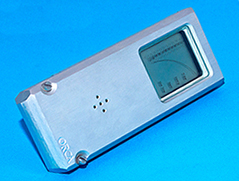 |
Sos propose sophisticated instruments without integrated circuits, first with the automatic Timer Sub with acoustic warning, spring charge by means of a foldable external lever; then, with the Table Timer which, besides considering the air consumption, it allows to calculate repeated dives and to follow the dive tables with the utmost precision. At its turn, Mega Sport presents the Manotimer, a pressure gauge with hose on which, besides the bottle pressure, you can read depth, decon steps and residual autonomy.
By shifting to the spear fishing dive, Gsd surprises again with the pneumatic Punto spear gun, with rear handle, proposed in a set including the handle block and three shafts-tanks of 50, 70, 90 centimeters, interchangeable on the ground or underwater, with a simple move. Of a newest concept is also the Scubapro Air 2, a single control for BCD with an integrated, valid emergency second stage. Among photo divers the added Sub-a-Wider optic has a big success, to comfort those who can only dream about the Nikkor 15 mm optic for their Nikonos camera. What makes a bit effect is the arrival of Canon with their Kamba housing for the AE-1 camera. Images with spontaneous or professional models reign, with their colored dresses which make sad the pictures of standard divers, all black dressed.
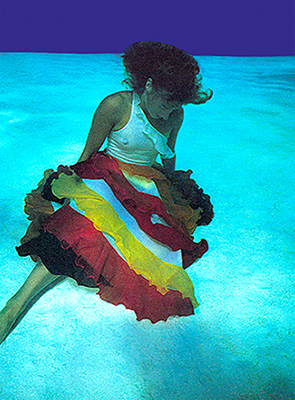 |
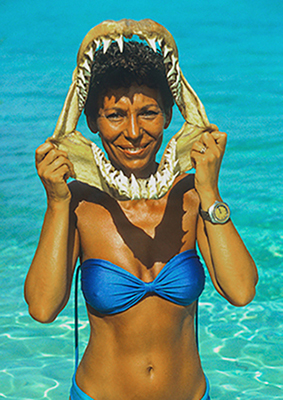 |
In 1984, year in which Milano sees the light of the nice Sub magazine, tropical trips are at the reach of many and airplanes routing to the closest Red Sea or to Caribbean, Maldives, Indonesia, Seychelles islands are full of divers who return with their dive memory pictures. Besides the incredible and multi-color life of the coral reefs, there are new wrecks, always fascinating, a real "fatal attraction" for diving photo operators.
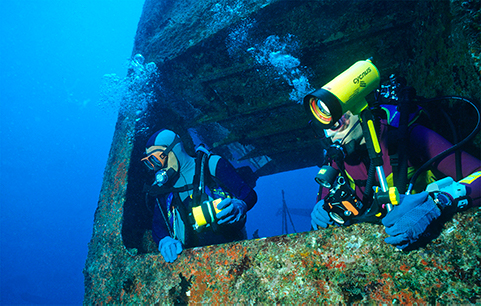 |
In the meantime, from America the BCDs with the jacket shape arrived, extremely comfortable and functional, another story compared to the ring-shaped ones. They are called BCDs - Buoyancy Compensator Devices. The italian market is euphoric, with two new companies emerging, Modulo M and Free Shark. The first, which will double in Ocean Ways and Dive Eng brands, offers a large range of products with very competitive prices and advertises a BCD jacket without hose, together with the Modulair series regulators; the second imposes itself in particular with its O.K. 747 BCD with front discharge with pneumatic control, operated by a second button in the hose, still an actual system after 20 years of production. In the Mares catalogue, black Plana Graphite fins appear and, in the Scubapro catalogue, the pneumatic spear guns of the Magnum series with back handle become 5. Technisub proposes the Afrika dive suit, made in a synthetic light fabric; Mega Sport has the Spotable roll calculator, able to show deco times for the first and second dive. Reef Marine imports the compact Tekna DV-3, which stayed the top of recreational dive scooters for a long period of time.
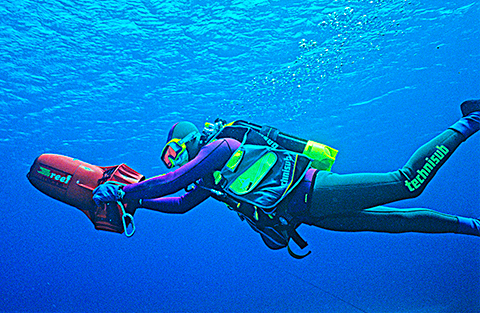 |
However, real new products still arrive from the photographic sector where Sub Center proposes the Alfamar to the dive operator newcomers, produced by Bencini; Scubapro launches Motor Marine 35, as a Nikonos alternative which, in 1983 renewed becoming Nikonos V, the last of the fantastic series of amphibious housings with direct optical viewfinder. In 1992, the majestic reflex autofocus Rs srl will follow, of such difficult task which will remain extremely far from the diffusion of its progenitors. Mask producers seem to adapt to dive photographers’ needs; oval and round single-lens masks return, now with the nose plug made in the lens under the glass, ideal to show the models’ face.
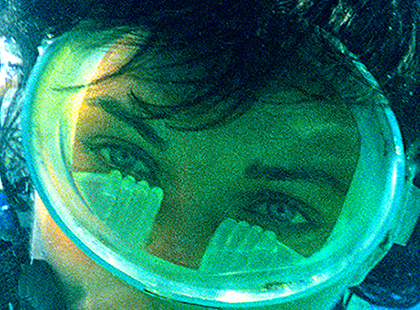 |
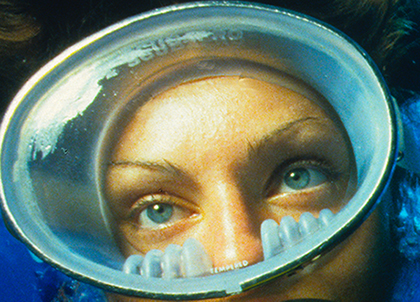 |
Besides these qualified manufactures, it is noticed a research of elegance with a careful choice of colors, coordinated with the different components of their dive gear. To excel in this is Sea Sub, with its "author’s suits" of the creative Camere. In fact, the year after, an article in Mondo Sommerso magazine titles “All colors for the 1986 diver”. In the meantime, in this sector Coltri Sub appears, already known for its compressors, proposing its own line of suits, masks, fins, regulators, besides the Deco Brain which distributes for two years.
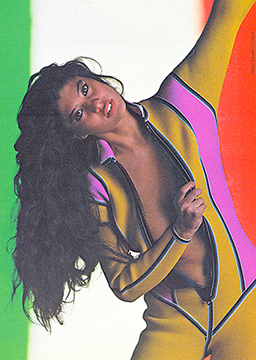 |
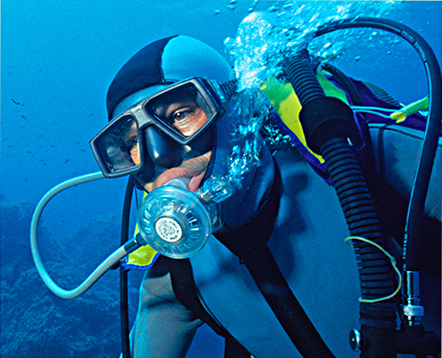 |
Among the high level gear, we must respect the Viking dry suits, and the Aga full-face mask imported by CervePro of Lorenzo Cervellin, ancestor of the current Aquatica company while a gib curiosity arises from the Poseidon Maximum regulator, which will transform in Jetstream.
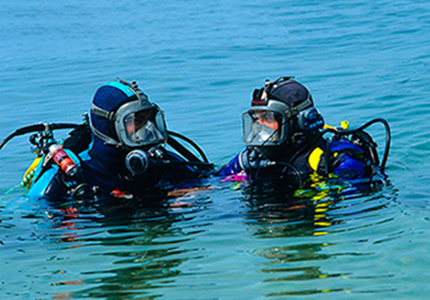 |
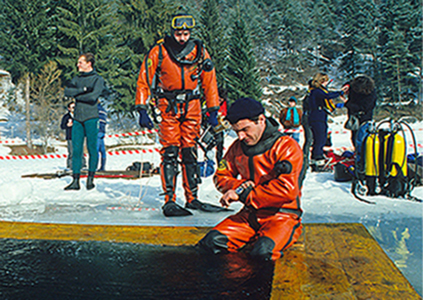 |
Of this euphoric moment, diving training agencies profit to multiply; to operate n Italy now there are Fips, Fias, Anis, Padi, Naui, Uisp Lega Sub. Big developments are going to open to electronics; after Divetronic and Orca many others try to enter this field, until now very limited to computers, proposing simple table readers, without a follow-up. Until the end of 1985, when it arrives a small and light wrist instrument, the Swedish Suunto Sme, based on US Navy tables. Despite his capabilities are not too good, it gets a lot of attention because of its look features, and for its famous brand, sensitizing the market. The Swiss Uwatec arrives in 1986 to begin a real revolution, by presenting the Aladin computer, with functions like the Deco Brain but quite different in its dimensions, weight, price, and logistics. The diving era begins from this small yellow and black instrument, able to guide the dive in each phase with numbers that follow in total autonomy, in a tiny display. At the end of the same year, Suunto responds with their new Sme Ml model in which the final initials stand for multi-level, to clarify its capabilities to manage any dive profile. Neither the American Orca stands still, presenting its Skinny Dipper. The age to calculate square dive profiles is finished. Of course, this will be a long process; at the beginning, mistrust is high, doubts still higher however, the call is irresistible, and in few years most divers learn how to trust electronic calculators. Decompression gauge gets in a drawer; tables with depth gauge and clock are kept as back-ups. The year after, Divetronic is on fire; the molds of Deco Brain are destroyed, and the production of the first electronic dive computer stops.
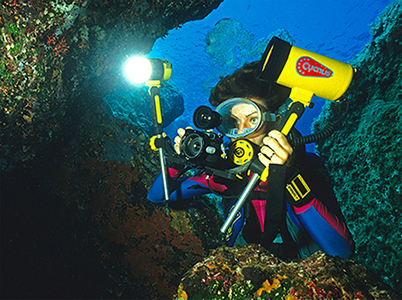 |
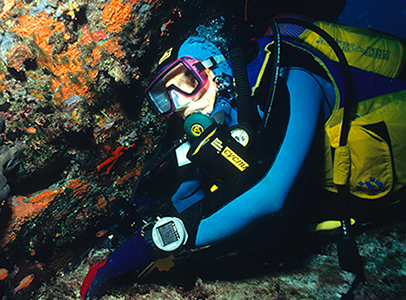 |
To give authoritative answers to the several questions that enthusiasts and obstinate critics keep on making on these instruments, the year after the first European conference on this subject is organized in Verona, Italy. Members from Suunto and Uwatec come as technical speakers, as well as executives of Mares and Technisub that are their distributors in Italy, and known people from the scientific field; public is full of journalists, representatives of other manufacturers, dive instructors, divers of different provenance.
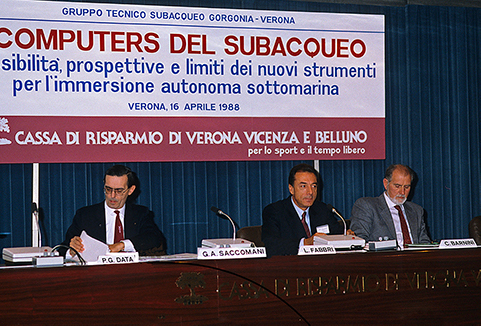 |
Besides computers, traditional dive gear keeps on multiplying and perfecting. By giving a look to the historical brands, among the new products in 1987 we find Scubapro G250 and Cressi F3 regulators, Technisub Nasa and Mares Plana Avanti fins, MegaSport Decotronic, that is the Decontrol with a digital, multi-function timer. Electronic digital is also the Citizen Aqualand watch, booked for a long future. Divers are continually expanding their borders, by visiting places and situations that were unthinkable in the past. Now, news are Wakulla Springs explorations, the so huge cave system in Florida which will give the name to Wkpp - Woodville Karst Plain Project, from which the operative standards of Gue - Global Underwater Explorers training agency will be borne, and the Dir - Do it right movement. For this exploration, powerful scooters are used, as well as long autonomy lights, while divers’ configurations follow precise standards. The year after, the S300 is re-presented, born as Gsd and now Salvas, while Cressi presents the FX regulator and Faro light. Modulo M proposes the innovative Reverse BCD, without internal air chamber, a system that soon spreads out; Coltri, besides its Ocean C 40 regulator launches its Naubos AR 88 oxygen rebreather, produced by Nautilus of Milan. The 1988 sees the launch of two new dive computers, the Mega Sport Megatronic Mgt/1 first Italian computer with, unfortunately, a short life, and the elegant Microbrain distributed by Dacor Italy. In the photographic field, the star is Fotoisotta, with its flashes of the Isoblitz series, heirs of Isomat, with Isolux lights and thousands of accessories.
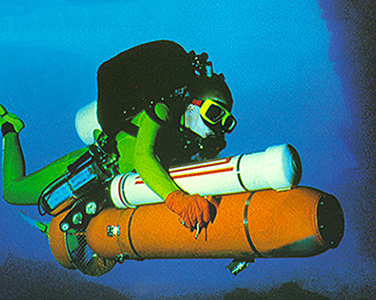 |
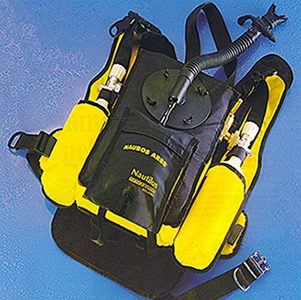 |
The end of the decade approaches when diving has its larger expansion. This sector continues to be euphoric and, sometimes, it succeeds in inventing something unusual, such as Scubapro regulators with spheric valve and comb control. For the rest, there are only slight improvements and miniaturizations since “small is fashion”. Certainly small, original, and winsome is the upstream Omega II regulator of Oceanic named "tiny telephone" because of its successful shape. All the opposite concerns electronics. The old Dcp of Sos partially revisited is still trying to cope with computers, now able to indicate deco stops in minutes, but it is a lost case. Brand new computers are launched such as Oceanic Datamax and Delphi, a console distributed by Mares. Then, in 1988, to act as leader the Aladin Pro computer arrives, with a new look from black yellow to light gray, with a larger screen with respect to the previous model.
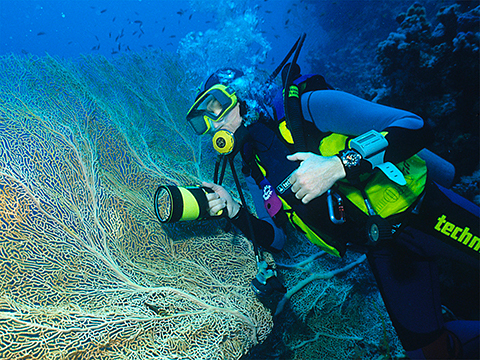 |
The attention is all for these devices, the rest of gear is taken for granted however, the classic equipment is slightly enriched. Tri-Star fins of Technisub and Yellow Sub 200 flash of Sea & Sea are among the most interesting.
|
THREE STRANGE THINGS In 1988-1989 some manufactures want to sort out from the traditional gear, trying to invent something new. Three things in particular catch the attention, The Aquavox of Tigullio is a quite simple accessory, adjustable to any regulator that, according to the motto “silent as a fish”, allows to talk underwater. In fact, this is true: words articulate in an air chamber interposed between lips and second stage so, your nearby buddy can hear them without difficulty. It is a pity that this "extension" makes annoying the regulator weight, interfering with its performances; secondly, it is so nice to hear only the sea talks!! |
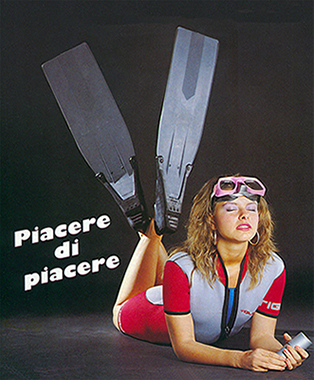 |
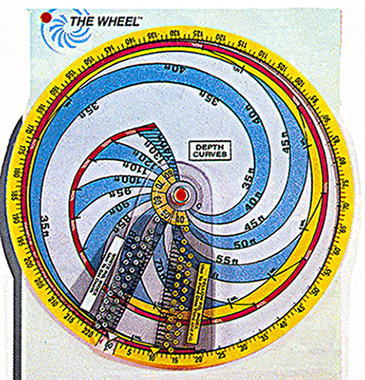 |
Color continues to rule; some even propose dismountable pockets from BCDs to alternate them to others of different colors. However, something is unfortunately changing in the idea of look; elegance that before was a must with care is getting lost, overwhelmed by improvisation, by an excess of combinations very often with a rainbow effect and of bad taste. So much as to start a return to black, which is then favored by the new concepts and systems of demanding diving, for which only black will be "tech". In the training agency field comes the Padi "wheel", a planner for single, repeated, multilevel recreational dives, intended as a training tool, and as an alternative to the computer for those who still do not trust it or have not decided on the investment.
If for computers the diffusion is only at the beginning, in the field of tables and of manual planners there is a great confusion in this period of time, to the point that it seems to have gone back to twenty years earlier when the US Navy tables of 1958, the US Navy tables of 1965, the Albano, the French Gers were in fashion. Now, we are struggling to choose between the US Navy, the Bühlmann, the standard and multilevel Padi, the British Bsac tables, with a great confusion on the ascent when, in the group of divers, there are those who must respect the speed of 10 m/min and those who run at 18 m/min, those who find themself out of the safety curve and those who don't.
The horizon of the equipment suggests important innovations, but for the moment, they concern only divers engaged in deep or exploration diving. In USA, Nitrox has taken hold, nothing new as a mix but, for some years, used regularly for long explorations at low altitudes, so much that Noaa National Oceanic and Atmospheric Administration is interested in it; Noaa succeeds in establishing which are the really advantageous nitrogen-oxygen mixes defining "standard Nitrox" the two mixes containing respectively 32% and 36% of O2. Nitrox is also used as a decompression gas from those professionals who began to make Trimix deep dives, a ternary mix composed of helium, oxygen and nitrogen as an alternative to the classic binary Heliox mix, already known from our professional divers in 1930, and used by military divers and off-shore deep divers. In Italy, the first divers who began using mixes were professional coral divers, whose boats equipped with hyperbaric chamber in their aft show at Santa Teresa di Gallura, at Alghero and at Stintino, Sardinia island. Many dive in open breathing apparatus with huge tri-tanks on their backs; few others prefer the autonomy of modified semi-closed circuit self-contained breathing apparatus, integrated by a pair of cylinders fixed behind.
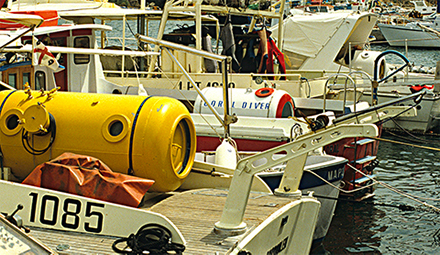 |
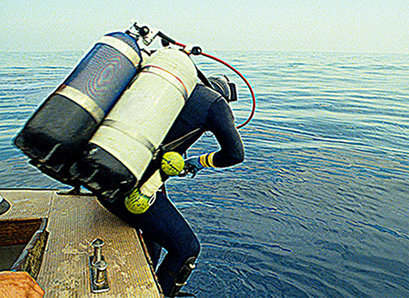 |
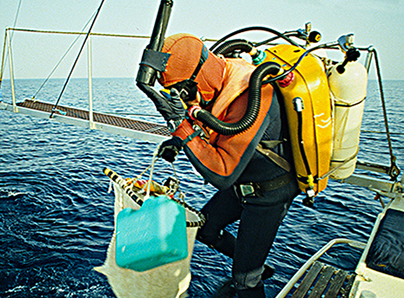 |
In short, the American idea of Trimix mix transfers to recreational dives, and the "technical dive" is born. It will arrive in Europe only few years later, bringing a series of new things and changes in the way demanding diving is conceived, affecting the equipment a lot. To this regard, at the beginning it relates only to Nitrox; people question if dangers arise by using non compatible equipment with oxygen. Some companies and some training agencies would like to oblige to use dedicated regulators, bottles and BCDs that should not be used with air, not to pollute them; consequently, we begin to see yellow and green gear, distinctive colors although there is no regulatory support in this regard. On the opposite, there are those who make everything so easy, and tend to treat oxygen careless. A long time will pass to clear these issues.
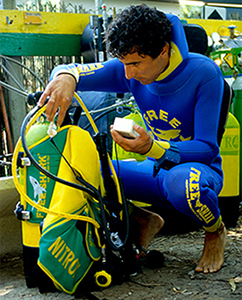 |
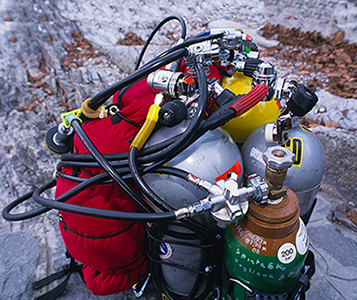 |
We are in 1989; the Berlin wall falls, and the world changes in many ways. Also, diving is directed to end an age and to enter the current one, oriented to the business concept. In Italy, instructors of a long list of training agencies become thousands; diving centers hundreds, tour operators organizing exotic dive travels all over the world are countless; diving magazines multiply, manufacturers expand their borders, and now produce continuously. Numbers are big and increasing. A euphoria, however, destined to last shortly. Before passing into the third millennium, the entire sector will enter a crisis, probably due to too many consumer excesses to which it exposed itself. Many brands will leave the scene, training agencies will suffer, autonomous instructors will almost disappear. Gear also undergoes major changes with the entry into force, in 1990, of the EC standards dictated by Cen – European Center of Normalization. From this moment, each component of the equipment must conform to Cen rules, that is absolutely positive because it will force some products “too easily” made, to disappear from the market; nevertheless becoming an obstacle to innovations in search of alternative, technical ways. Nonetheless, the following years will bring great technological evolutions, first with technical diving and mixes, then with the advent of rebreathers; a niche of activities for small groups of divers but spectacular to the point to become protagonists of news. For technical dive it was intended what in the recreational dive goes behind traditional limits of time and depth with air but, for someone, this will almost exclusively mean extreme dive and "machismo", excess of own gear and consequent heavy weights to carry.
Only some very well prepared and trained divers will be able to correctly manage a dive at 100 meters with a tech group assembled as the one in the above picture, with the addition of two extra bottles on the sides including their pressure gauges, 10 regulators, double instruments, etc. Incidents will multiply so, the period of excesses will not last much longer. At the end of 1990, the attention will begin to pose towards rebreathers, of which the English manufacturer AP Valves is the first protagonist with its yellow Buddy Inspiration. Important news for the future, that see a net distinction between the recreational mass divers and the minority of technical divers, at their turn divided between close circuit supporters and open circuit traditionalists.
At the last decade of the century, colors in diving are beginning to shade; fashion wants black and advertising pages also become very technical and serious. A new era began; in short, links with the previous period thin. Historic dive remains only in the memory of someone; now, we enter in the present time, in the era of pure, easy and disengaged entertainment for everyone, with the alternative of the fascinating but demanding technical sector, but only for few.
________________